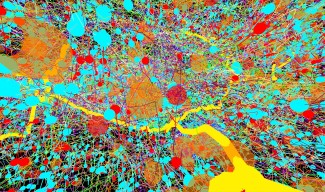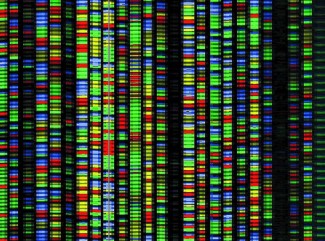Trisomy 21 is the first genetic cause of intellectual disabilities, and currently cognitive rehabilitation is the only therapeutic approach offered to patients. A phase II clinical trial conducted by an international team involving researchers from the brain and spine Institute and from the Paris Diderot University, highlights for the first time, that epigallocatechin gallate, a natural compound present in high quantities in green tea, significantly improves patients' cognitive abilities. This improvement, which continues for six months after the treatment is stopped, is accompanied by the restoration of connectivity between certain brain areas. These results, published in Lancet Neurology magazine, open a new therapeutic approach for the treatment of intellectual disabilities associated with trisomy 21.
In France, 60 000 people are affected by trisomy 21, and one child in 1400 is born with this pathology (1/700 prior to prenatal diagnosis). Trisomy 21 is reflected, among other things, by intellectual impairment and learning and memory deficits that vary according to individuals. To improve patients' lives, cognitive rehabilitation is the only proposed approach, but its actions are limited. This chromosomal abnormality is defined by the presence of a third copy, in whole or in part, of chromosome 21, which results in the overexpression of many genes carried by this chromosome, especially Dyrk1A, a kinase which errors in gene dosage are involved in the intellectual disability observed in trisomy (3 copies), and in MRD7 syndrome (1 copy).
In a previous study published in 2009, researchers had shown, in an experimental model of trisomy, that an active ingredient present in green tea, epigallocatechin gallate, or EGCG, inhibits the activity of DYRK1A protein : animals treated as early as gestation showed morphological and cognitive changes with the recovery of normal performance in the recognition test of a new object. This discovery was then exploited to implement a clinical pilot study conducted in 30 young adult patients with trisomy 21. This study showed improved learning in treated patients.
Through these very encouraging results, researchers and clinicians have conducted a phase 2 clinical study, randomised, placebo-controlled, to test the efficiency of this natural compound in 84 patients (young adults) with trisomy 21. Researchers compared the efficiency of cognitive learning through a variety of tests, memory, language, learning ..., with or without treatment for 12 months.
The results of this study demonstrate that treated patients have better cognitive performance than those on placebo. The treatment with EGCG coupled with a daily cognitive stimulation (also carried out in the group with placebo) has a beneficial effect on memory impairment and deficits in executive function (brain processes settled to organise and solve problems) in the young adult with Down syndrome. Besides, the performance observed in treated patients lasts for 6 months after stopping treatment.
In patients with trisomy 21, the functional connectivity between certain brain areas is altered. Thanks to imaging studies, researchers highlighted an increase of this connectivity in treated patients, more significant in frontal areas and the cerebellum. The treatment also comes with the normalisation of cortical excitability.
This study is the first to show the efficiency of a compound, targeting neuroplasticity, on cognitive abilities as well as on the improvement of cerebral connectivity in patients with trisomy 21. The performance observed persists even after stopping treatment. Improve the lives of patients with trisomy 21 would thus be possible with this natural compound. Researchers now wish to start trials in children and to achieve a phase 3 clinical trial for the use of this compound extracted from green tea as a treatment for cognitive deficits in trisomy 21.
Sources
https://www.thelancet.com/journals/laneur/article/PIIS1474-4422(16)3003…
Rafael de la Torre, Susana de Sola, Magí Farré, Jesus Pujol, Joan Rodriguez, Josep María Espadaler, Klaus Langohr, Aida Cuenca-Royo, Alessandro Principe, Laura Xicota, Nathalie Janel, Silvina Catuara-Solarz, Gimena Hernandez, Gonzalo Sanchez-Benavides, Henri Bléhaut, Iván Dueñas, Laura del Hoyo, Bessy Benejam, Laura Blanco, Sebastiá Videla, Montserrat Fitó, Jean Maurice Delabar, Mara Dierssen. The Lancet Neurology.







